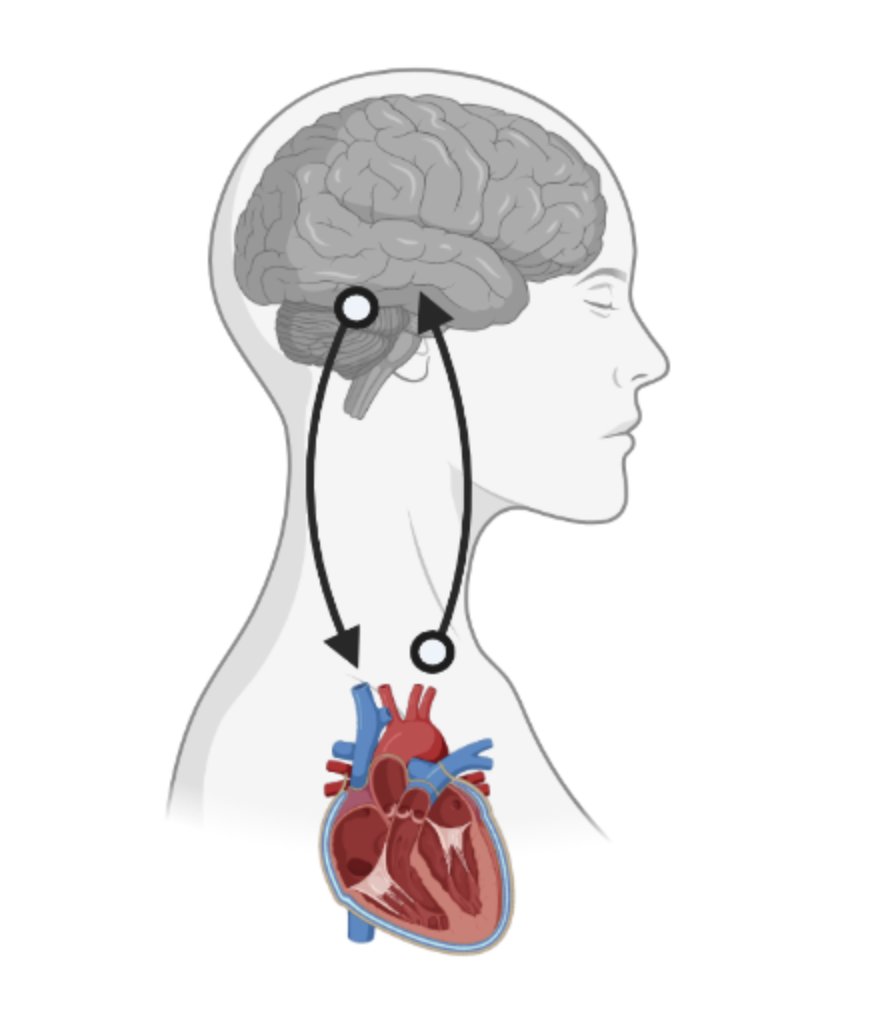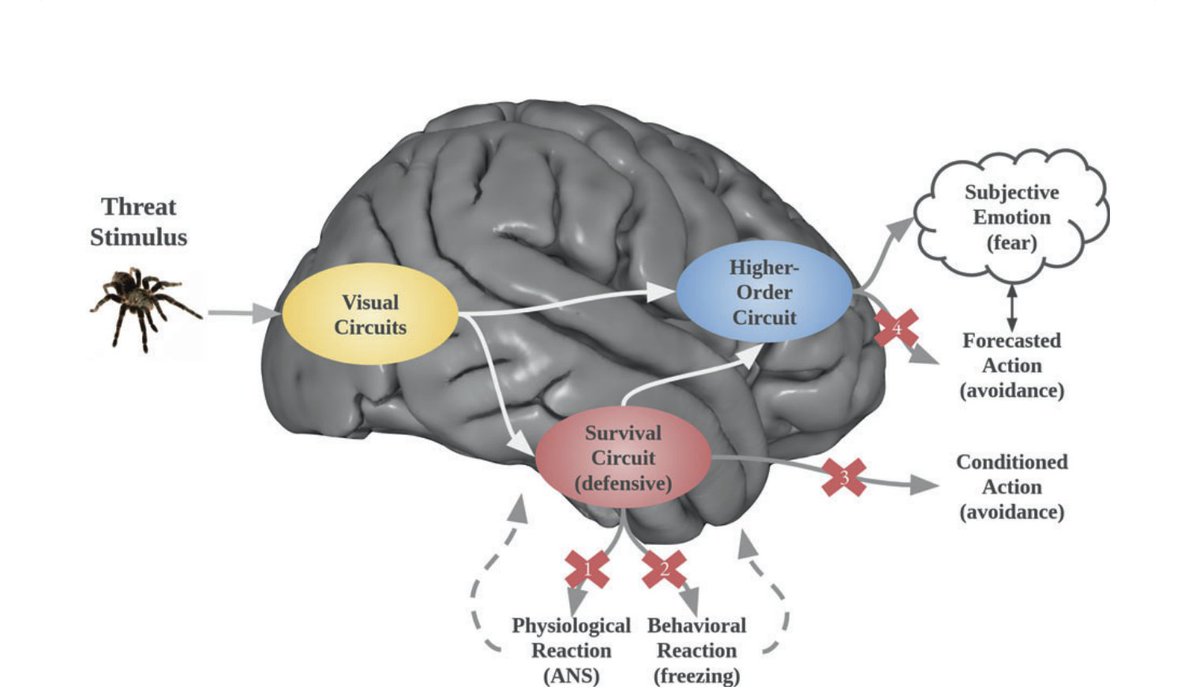
Ever wonder how physical sensations such as a racing heart give rise to fear? Using an adrenaline-like challenge during brain imaging we found that abnormal heart-brain communication contributes to increased fear in women with generalized anxiety disorder…ja.ma/3GmzcSH 

First, women with GAD showed a peripheral hypersensitivity to stimulation across all doses indicating that it took less adrenaline to make their hearts race than unaffected individuals… (2/n) 

Second, the racing heart rates were accompanied by increased heartbeat sensations. But this difference happened only during a low level of stimulation… (3/n) 

Suggesting that an interaction between the peripheral and central nervous systems must have selectively driven the differences in experience reported by the GAD patients… (4/n)
Using fMRI, we localized the source of this difference in ‘interoceptive awareness’ to a specific region of the brain. But it wasn’t the first area you would immediately think of… (5/n) 

While we found that the paradigm focally activated the insular cortex in a dose-dependent manner… (6/n) 

It was the ventromedial prefrontal cortex (vmPFC) that showed group differences in activation. Specifically, a blunted response occurred only at the lower level of stimulation, suggesting this brain region played a key role in the interoceptive differences seen earlier... (7/n) 

Consistent with this interpretation, vmPFC hypoactivation was associated with heart rate responses, as well as heartbeat and breathing sensations… (8/n) 

But not anxiety, despite the fact the drug increased anxiety to a greater extent in the patients at all levels of stimulation… (9/n) 

So…what does this all mean? (10/n)
We think that in GAD, a lack of ‘top-down’ regulation in the presence of heightened ‘bottom-up’ sympathetic nervous system stimulation elicits an internal state that promotes anxiety… (11/n)
The lack of vmPFC associations with anxiety suggest that a more broadly distributed neurocircuitry is important for generating the experience of anxiousness in GAD… (12/n)
Maybe dysregulation within vmPFC-to-insula circuitry entails a failure to constrain sympathetic arousal resulting in downstream consequences such as worry, rumination, & anxiety. Some supporting evidence here: biorxiv.org/content/10.110… (13/n) 

Our findings are consistent with recent conceptualizations of anxiety @theamygdaloid highlighting the role of higher-order circuits in subjectively experienced fear that is triggered by defensive bodily reactions… nature.com/articles/s4138… (14/n) 

As well as a robust literature detailing the role of the vmPFC in discerning safety from threat... @DeanMobbs (14/n)
doi.org/10.1016/j.tics…
doi.org/10.1016/j.tics…
To our knowledge, this is the first functional neuroimaging study to examine how the direct modulation of interoceptive signals influences fear-related (ie, vmPFC) neurocircuitry in individuals with clinical anxiety… (15/n)
Potential clinical applications include pharmacological or neuromodulation targeting of vmPFC responses to determine their effect on anxious rumination in GAD. Real-time fMRI neurofeedback or transcranial focused ultrasound (tFUS) are methods that come to mind… (16/n)
Overall, this experimental medicine study provides novel mechanistic evidence that the autonomic and central nervous systems both contribute to the interoceptive pathophysiology of GAD. #interoception… (17/n)
So, the next time someone says that anxiety is “all in your head” you can correct them: it’s driven by your brain and body. And sometimes, it’s the interaction between them that may be the deciding fear factor… (18/n)
Huge thanks to intrepid first author Adam Teed, @mpwpaulus,@wesstat,@RachelcLapidus,@FloatResearch, Maria Puhl, Valerie Upshaw, Rayus Kuplicki, Walt Kaye, Olu Ajijola, Jerzy Bodurka, LIBR volunteers/staff who assisted the study & our funders @NIMH @NIGMS The WKW Foundation (19/n)
Adam is currently on the job market, with interests in #digitaltherapeutics #digitalpsychiatry #psychedelicmedicine. Find him here:
linkedin.com/in/adam-teed-b… (20/n)
linkedin.com/in/adam-teed-b… (20/n)
Postscript: there’s much more in the paper and Supplement, including a Bayesian longitudinal time series analysis, ROI analyses of other limbic regions (e.g. amygdala), and evaluation of interoceptive accuracy. Thanks for reading to the end! (End)
• • •
Missing some Tweet in this thread? You can try to
force a refresh



